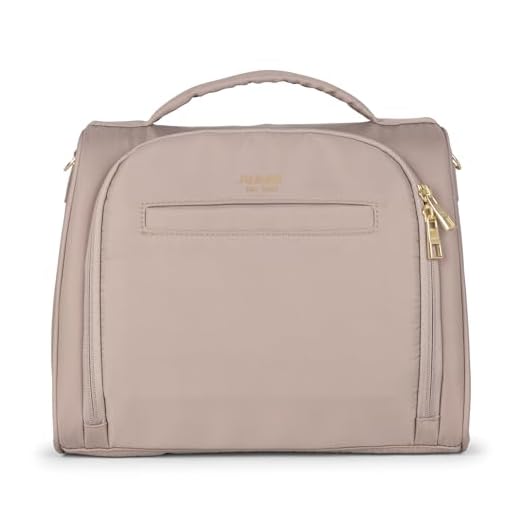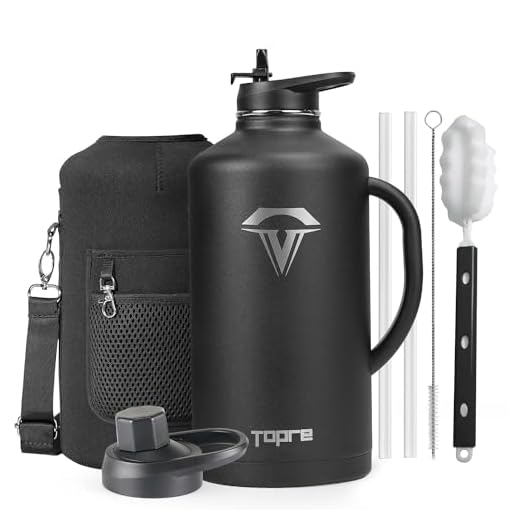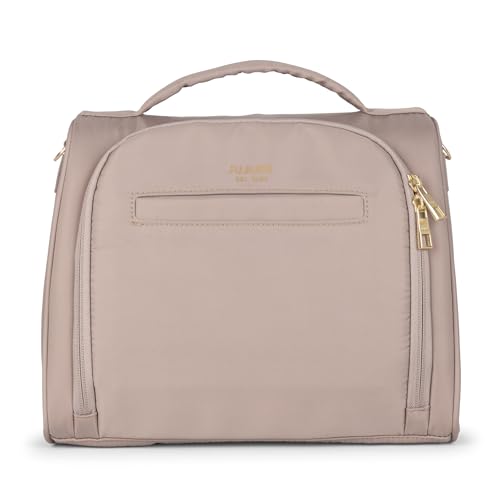





Utilize a dedicated compartment in your travel bag for your infant’s feeding aids. This keeps them easily accessible and organized. Ensure that each container is clean and adequately dried before packing. A thorough cleaning can prevent bacterial growth and unpleasant odors during transit.
Opt for travel-sized containers if possible. They are lighter and take up less space, ideal for compact storage. Additionally, consider using insulated pouches to maintain the desired temperature of liquids. This ensures that formula or milk stays fresh for longer durations, crucial during extended trips.
Protect each feeding container by wrapping them in soft items like burp cloths or clothing. This minimizes the risk of breakage and shields sensitive materials from external pressure. Labeling the contents will aid in quick identification upon arrival.
When flying, verify airline regulations regarding liquid allowances and storage requirements beforehand. Some airlines may have specific guidelines for transporting feeding materials, so being informed can save time and prevent complications during security checks.
Securely Transporting Feeding Containers
Utilize padded pouches or cloths to shield the containers from impacts during travel. Keeping them upright in your bags is vital to prevent leakage. Select soft-sided carriers or specialized organizers designed for children’s feeding items, which provide extra cushioning.
Recommended Materials
- Bubble wrap or foam padding for cushioning
- Reusable cloths or towels for added insulation
- Rigid containers for protection from crushing
Strategic Arrangement
Place the protected feeding vessels in the center of your packed items. Surround them with soft clothing or blankets to create a buffer against movement. Avoid positioning heavy objects on top, as this can cause pressure that may result in breakage.
- Layer soft items around the containers
- Utilize pockets in your travel gear for extra stability
- Keep lids secured or use tape to fasten
For hygiene, ensure all items are clean before packaging. Consider bringing a small bottle of dish soap or sanitizing wipes to maintain cleanliness when needed during your trip.
Selecting the Right Containers for Travel
Opt for lightweight and durable options to minimize total weight. Materials like polypropylene or silicone are both sturdy and easy to clean. Choose containers with wide mouths for easy filling and cleaning, especially when on the go.
Convenient Features
Consider options with built-in measuring marks to simplify portion control. Additionally, look for leak-proof designs to prevent messy spills in your belongings. Some models offer collapsible features, making them more space-efficient.
Size Versatility
Pick a variety of sizes to cater to different needs throughout your trip. Small containers are ideal for short excursions, while larger ones can accommodate longer durations. A mix will ensure you’re prepared for any scenario.
Preparing Bottles for Packing
Ensure each feeding accessory is clean and dry before placing it in your belongings. Start with disassembling all parts, including nipples, collars, and any valve systems. This approach helps prevent leaks and makes it easier to secure them during travel.
Utilize protective sleeves or pouches designed to safeguard fragile items. If unavailable, soft fabric or bubble wrap can provide a makeshift solution. Wrap each component separately and avoid stacking, as this could lead to damage.
Consider filling these vessels with formula or water for added convenience, knowing that security protocols may require you to dispose of liquids at checkpoints. If you choose to carry contents, verify regulations to avoid complications.
Label each container with the contents and date, especially if storing homemade mixtures, to keep track of freshness. This practice is beneficial when traveling internationally where regulations may differ.
Employ a dedicated section of a larger travel bag, or use a separate tote specifically for these items. Keeping them organized will assist in ease of access while also enhancing the safety of your supplies.
Finally, ensure all items are securely closed to prevent any incidents during transit. Double-check that lids and caps are tightly fastened after wrapping to minimize risks of spills or contamination.
Optimal Arrangement in Your Luggage
Position larger items, such as clothing or blankets, at the base to create a stable foundation. Utilize reusable organizers or pouches for smaller components. These can efficiently house everything from pacifiers to tiny utensils.
Place the containers upright to safeguard against leaks. A travel cooler or insulated pouch can further secure contents while also maintaining temperature. Ensure easy access to these necessities by situating them near the top of your bags.
Maximize space by fitting smaller items into nooks created by larger pieces. Soft materials like diapers or washcloths can cushion and protect delicate items. If traveling with a stroller, consider using its storage compartments for extra organization.
For additional convenience, consider options that complement your travel accessories, such as best quality patio umbrella brands for outings. This adds to your preparedness while exploring new destinations.
Lastly, keep your selected items visible and reachable by cataloging them in a packing list. This helps maintain order and ensures that nothing essential is overlooked during transitions. With meticulous arrangements, travel becomes less stressful and more enjoyable.
For those aiming to optimize their travel experience, choose the best luggage for greek island hopping. This can significantly enhance convenience and accessibility throughout your trip.
Using Packing Materials to Protect Containers
Utilize bubble wrap for cushioning glass items. Wrap each container individually, ensuring no gap remains between the wrap and the surface of the item. This technique minimizes impact and reduces the risk of breakage during transit.
Soft Packing Options
Consider using cloth materials, such as towels or clothing, to envelop the vessels. This approach not only provides protection but also conserves space within the travel gear. Position these soft items around the containers to absorb shocks.
Heavy-Duty Packing Supplies
Employ specialized packing peanuts or foam inserts in your suitcase. Fill empty spaces around the containers with these materials to create a stable base. This method prevents movement, which is vital for maintaining the integrity of fragile items.
For additional security, place all wrapped containers in a dedicated pouch or case. Use sturdy boxes that can withstand pressure from other packed items. Maintain the integrity of your belongings by choosing strong materials to reinforce their safety during your trip.
Evaluate your gear collection too. Sturdy bags or cases allow easy transportation. Don’t overlook the benefits of adding hard-shell cases for maximum protection. Brands that specialize in protective gear often provide options suited for both value and quality, similar to the best digital camera for 250 dollars.
Tips for Remembering Bottle Accessories
Secure all necessary accessories before departure. Include a sufficient number of nipples suited for your child’s age and preferred flow rate. Don’t forget to bring extra caps and travel lids to prevent leakage.
Consider packing a small brush for cleaning. This tool ensures efficient maintenance, especially when on the go. A collapsible drying rack can also be beneficial for proper air-drying in various locations.
Invest in a dedicated storage pouch to keep everything organized. This will make locating items like pacifiers, teats, and cleaning wipes faster and easier during your travels.
Label your accessories, particularly if you have multiple children or are sharing items. A simple system can prevent mix-ups and ensure you have everything you need when you need it.
Lastly, prepare a checklist of items to verify before you leave home. Regularly updating this list will help you remember every component for your child’s feeding routine.
Checking Airline Regulations for Baby Bottles
Review airline policies regarding liquid restrictions and equipment prior to departure. Each carrier may have specific guidelines on the transport of liquids, especially for infants’ needs. Always check the airline’s official website or customer service for the latest requirements concerning containers and permissible quantities.
General Guidelines
Most airlines allow carrying liquids for infants without counting towards standard liquid limits. However, documentation may be required. Keep items easily accessible for security checks, as security personnel may need to inspect them separately.
International Travel Considerations
For overseas flights, regulations may vary significantly across countries. Familiarize yourself with both the departure and destination country’s policies. Some regions may have stricter controls, possibly impacting your ability to transport prepared liquids.
| Airline | Liquid Policy | Documentation Required |
|---|---|---|
| American Airlines | Allowed with infant | None |
| Delta Airlines | Allowed, no limit | Notarized letter for larger quantities |
| British Airways | Allowed based on infant needs | Passport or birth certificate |
| Lufthansa | Allowed, separate inspection | None |
Confirm any pre-boarding procedures with airline staff to minimize inconvenience at security checkpoints. Understanding these regulations can help ensure a smooth travel experience with your little one’s nutritional needs met.
FAQ:
What is the best way to pack baby bottles in my luggage for travel?
To pack baby bottles effectively, clean and dry them thoroughly before packing. Disassemble all components and place each bottle in a padded bag or wrap it in clothing to prevent breakage. If you’re bringing formula, consider using travel-friendly containers. Make sure to place the bottles in the middle of your suitcase for extra protection, surrounded by soft items like clothes or towels. This will help absorb any shocks during transit.
Are there any restrictions on packing baby bottles in carry-on luggage?
Most airlines do not impose specific restrictions on baby bottles in carry-on luggage, but regulations can vary. Generally, liquids for infants, including formula or breast milk, are allowed in larger quantities than standard liquids. Make sure to declare these items at security checkpoints. It’s also a good idea to check your airline’s guidelines prior to travel, as they may have particular rules regarding baby products.
How can I prevent leaks when packing baby bottles?
To prevent leaks, ensure that the bottles are completely dry and tightly sealed before packing. You can also use special travel caps or sealing discs designed for baby bottles, which help create a tighter seal. Additionally, placing each bottle upright in your luggage can reduce the chances of spilling. If possible, use a waterproof bag or container for added security. This way, if any leaks do occur, they will be contained and won’t damage your other belongings.







